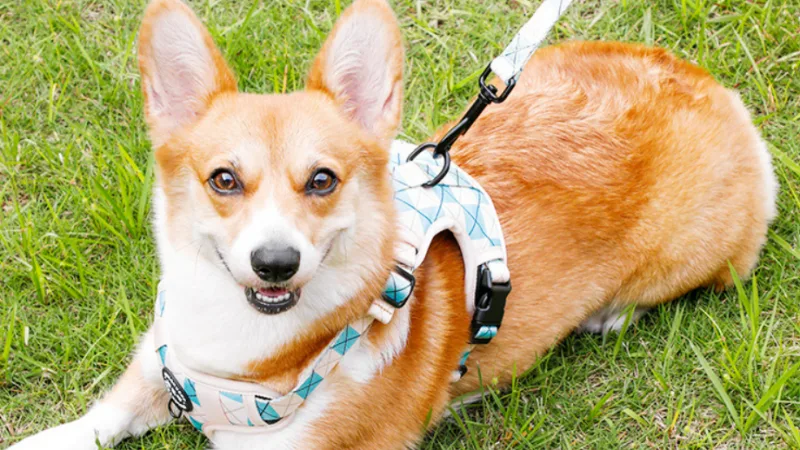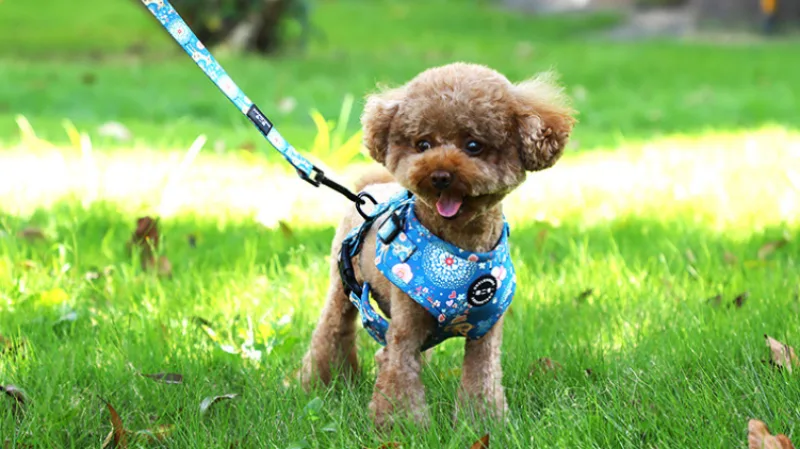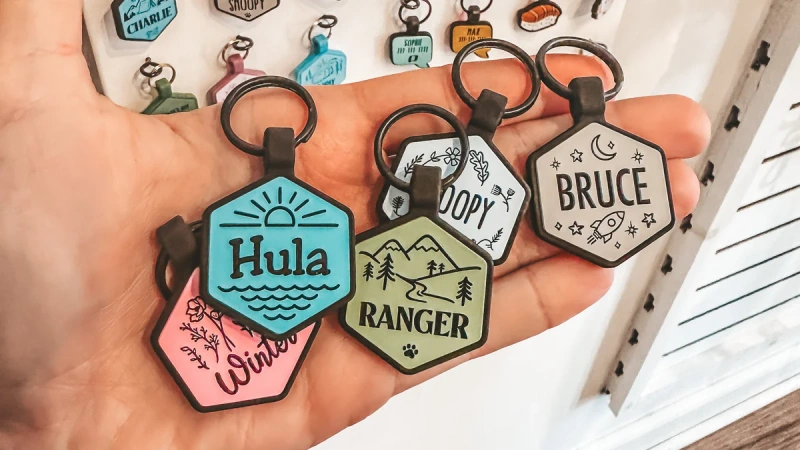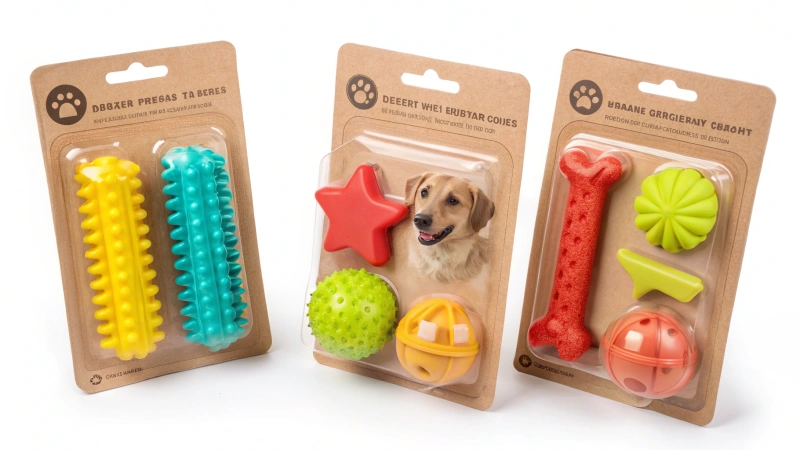Puppies can begin wearing a harness as early as 8 weeks old, which typically coincides with when they are brought home from breeders or shelters. Introducing a harness at this young age offers several benefits and helps establish good habits early on.
Benefits Of Early Harness Training

Safety And Comfort
- Neck Protection: Harnesses are particularly important for small breeds or puppies that tend to pull on the leash. Unlike collars, which can put pressure on the neck and potentially cause injury, harnesses distribute pressure across the chest and back, reducing the risk of damage to the trachea and neck area.
- Control: A harness provides better control over your puppy during walks, making it easier to manage their movements and prevent them from darting into dangerous situations.
Training And Socialization
- Leash Training: Starting leash training with a harness helps puppies get used to walking on a lead without the discomfort that can come from a collar. This early exposure is crucial for developing good walking habits and confidence in new environments.
- Positive Associations: By introducing the harness in a positive way—using treats and praise—puppies can learn to associate it with fun activities, such as walks or playtime, rather than viewing it as a restriction.
How To Introduce A Harness

- Familiarization: Allow your puppy to sniff and explore the harness before putting it on. This helps them become comfortable with the new object.
- Short Sessions: Start by putting the harness on your puppy for short periods while at home, gradually increasing the time as they become accustomed to it.
- Positive Reinforcement: Use treats and praise whenever your puppy wears the harness. This encourages them to accept it willingly.
- Outdoor Exposure: Once your puppy is comfortable wearing the harness indoors, you can take them outside for short walks, ensuring they are fully vaccinated first.
Considerations
While puppies can wear harnesses from a young age, it’s essential to choose one that fits properly. A well-fitted harness should allow for some movement without being too tight or restrictive. Regularly check the fit as your puppy grows to ensure comfort.
Expert Advice From Trainers
- Positive Associations: Trainers emphasize the importance of creating positive associations with the harness. This can be done by allowing the puppy to explore the harness at their own pace, using treats and praise to encourage acceptance. According to Pat Miller, a behavior consultant, it’s crucial to be patient and avoid rushing the process.
- Safety And Control: Trainers highlight that harnesses provide better control over puppies during walks, especially for those that tend to pull. This is particularly important for small breeds or those prone to neck injuries from collars.
- Gradual Introduction: The introduction should be gradual; start by letting the puppy wear the harness for short periods indoors before moving outside. This helps them acclimate without feeling overwhelmed.
Insights From Veterinarians
- Physical Development: Veterinarians agree that puppies can safely wear a harness as soon as they are brought home, but they should be monitored for proper fit to avoid discomfort or injury. A well-fitted harness should allow two fingers to fit between the puppy’s skin and the harness.
- Growth Considerations: It’s essential to adjust or replace the harness as the puppy grows. An improperly fitted harness can lead to chafing or even embedded harnesses, which can cause serious injuries.
- Use During Vet Visits: Some veterinary practices may have policies regarding harnesses during visits for safety reasons. For instance, they might prefer using slip leads instead of personal harnesses to prevent escapes while transitioning between leashes.
Frequently Asked Questions
Q: How long should a puppy wear a harness?
A: Puppies can wear a harness for extended periods, but it is generally recommended to remove it when they are not actively engaged in walks or training. While some experts suggest that a well-fitted harness can be worn all day if the puppy is comfortable, it is crucial to monitor for any signs of irritation or discomfort. Ideally, the harness should not be left on during unsupervised times, especially when the puppy is at home, to avoid potential hazards like getting caught on furniture or chewing on the straps.
Q: Should a puppy wear a collar all the time?
A: Yes, puppies should wear a collar at all times for identification purposes. A collar allows you to attach ID tags that are essential if your puppy gets lost. However, it’s important to ensure that the collar fits properly and is comfortable. Many trainers recommend removing the collar during crate time or when the puppy is unsupervised to prevent choking hazards or injuries from getting caught on objects.
Q: Should puppies wear collars or harnesses?
A: Both collars and harnesses have their uses. Collars are primarily for identification and should be worn at all times. Harnesses are beneficial for walks and training, especially for puppies that pull or have respiratory issues. Trainers often suggest using a harness for walks while keeping a collar on for ID purposes. Some owners choose to use both: a collar for ID and a harness for walking, which can provide better control and safety.
Q: Are there dog harnesses that can be worn all the time?
A: While there are dog harnesses designed for comfort and extended wear, it is generally not advisable to keep any harness on your dog 24/7. If you choose to use a harness throughout the day, ensure it is well-fitted and made of soft materials to minimize discomfort. Regularly check for signs of irritation or chafing, and consider removing it during rest periods or when unsupervised.
Q: Can dogs sleep with a harness on?
A: Dogs can sleep with a harness on, but it’s safer not to have any accessories while they are alone. The risk of getting caught or stuck can lead to injury. If you choose to let your dog sleep in their harness, ensure it fits well and does not cause discomfort. However, many experts recommend removing the harness during sleep to allow your dog to relax fully without any restrictions.
Conclusion
Introducing a harness to your puppy at 8 weeks old can be beneficial for their safety, comfort, and training. By following expert advice and considering your puppy’s individual needs, you can ensure a positive experience with harness use. Remember to prioritize proper fit, gradual introduction, and positive reinforcement throughout the process. As your puppy grows, continue to monitor the harness fit and adjust or replace it as needed to maintain comfort and safety.



